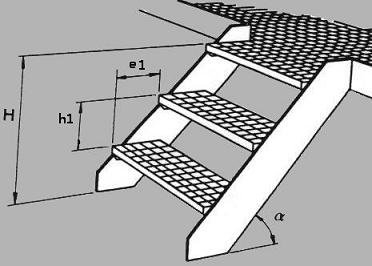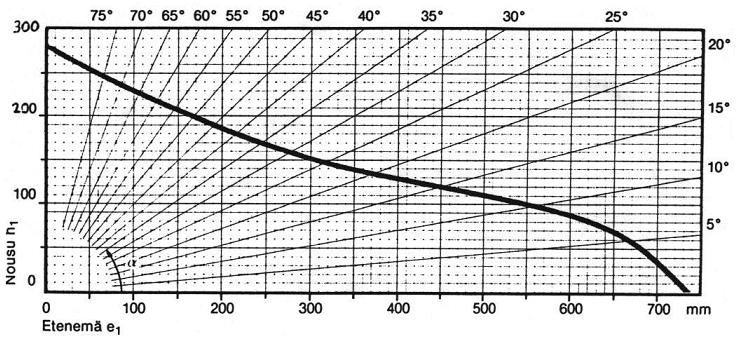Stairs; Vertical Rise and Horizontal Thread
 The starting point of the calculation is known information or data, in which case the unknown can be found out. When staircase angle is 10 degrees; the vertical rise of step is 100 mm, the known value. The starting point of the calculation is known information or data, in which case the unknown can be found out. When staircase angle is 10 degrees; the vertical rise of step is 100 mm, the known value.
Without EP-Calculation, other values in the table cannot be specified. This means that.EP-calculation has an ability to such kind, the other calculations can not.

Rise in vertical direction
Stair thread in horizontal direction
The coefficient associated with the Pascal triangle is 1.1. In the case of EP-Calculation, the coefficient is between 1.1 and 1.12, with the chosen average often being 1.11. The Pascal triangle is a kind of step pyramid with a factor of 1.1 (1). The coefficient 1.1 (1) is related to the distance, such as the rise of the stairs. Expressed in this by mm unit.

Degrees mm Calculation
8 90 100 / 1,11 = 90 Steps for walking
10 100 Known value
12,5 11 1,11 x 100 = 111 Steps for climbing
16 123 1,11 x 111 = 123
20 138 1,11 x 123 = 138
25 150 1,11 x 138 = 152
35 170 1,11 x 152 = 169
40 180 1,11 x 169 = 187
50 200 1,11 x 187 = 208
63 230 1,11 x 208 = 230
75 250 -
80 1,11 x 230 = 256
Pascal's Triangle gives the possibility to define the rise of steps to staircases between angles from 10 to 80 degrees. The known value is step rise 100 mm when staircase angle 10 degrees. When the angle 5 degrees, gets the raise by the Golden Ratio 1.618. 100 mm / 1.618 = 62 mm. The calculated values have mm accuracy and when 80 degrees, we are exactly there the chart is. originally the rise of the steps has been defined experimentally. If the curve in the chart has some difference to calculation, we can say the curve wrong designed.
Several standards can be replaced by a value and an associated coefficient. In strength calculation, diagrams (not just one curve as in the figure) are replaced with row data, so that all curves are known. Also those curves that are not defined.

17.4.2015*08:40 (110 - 1065)
www.karikolehmainen.com
epcalculation@gmail.com |